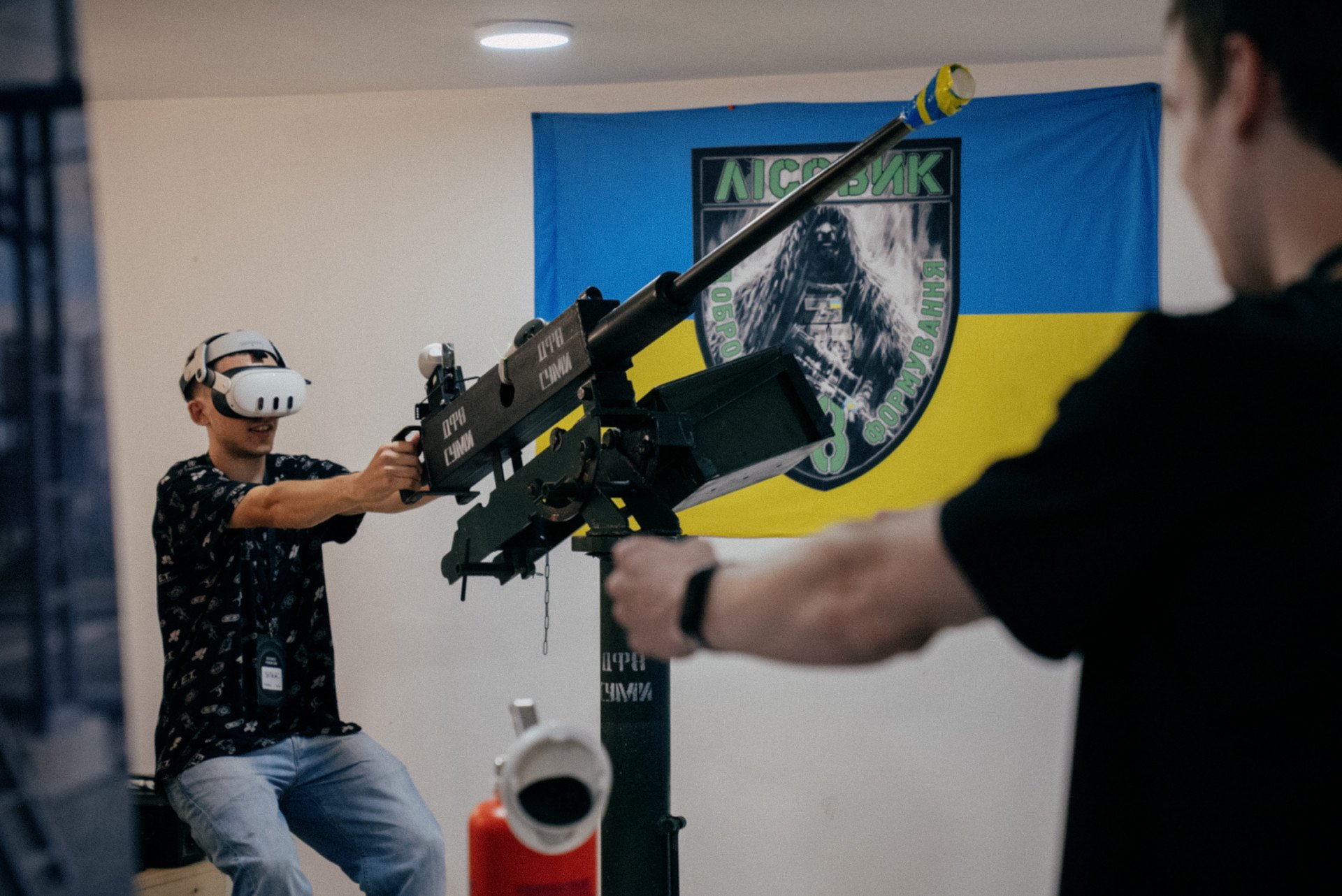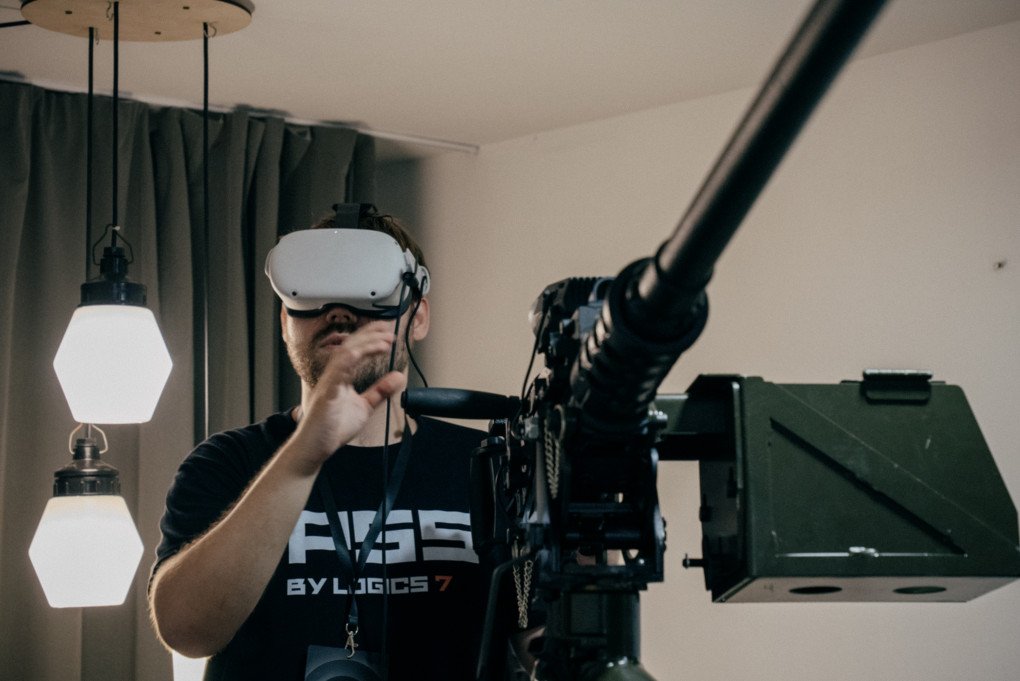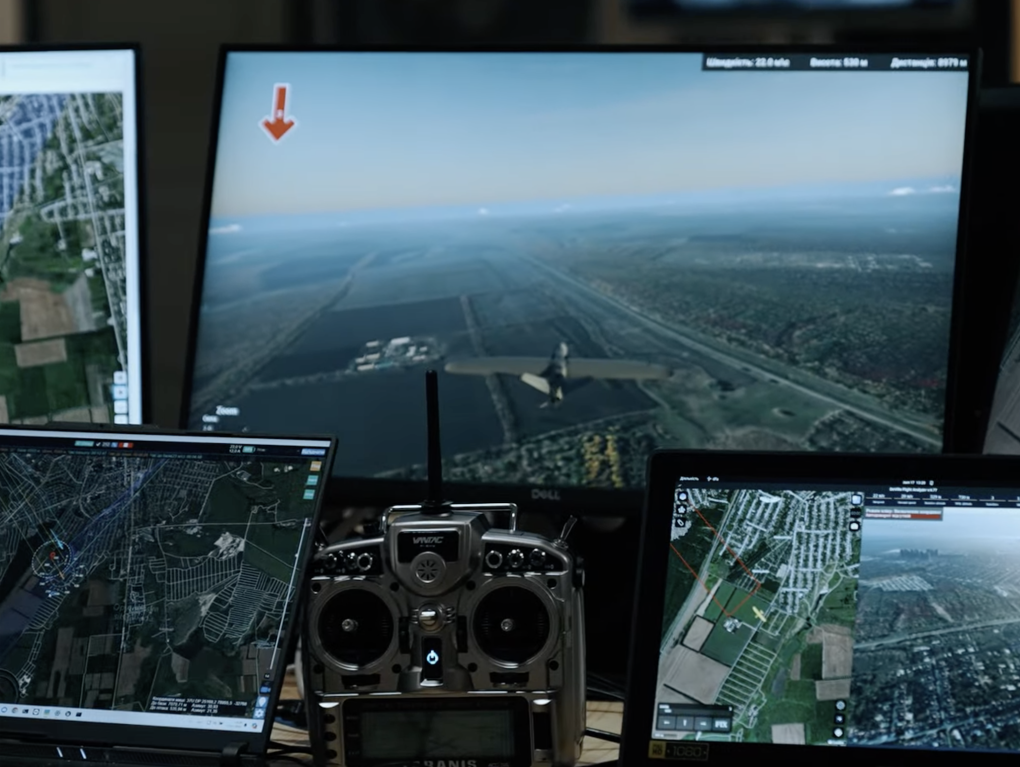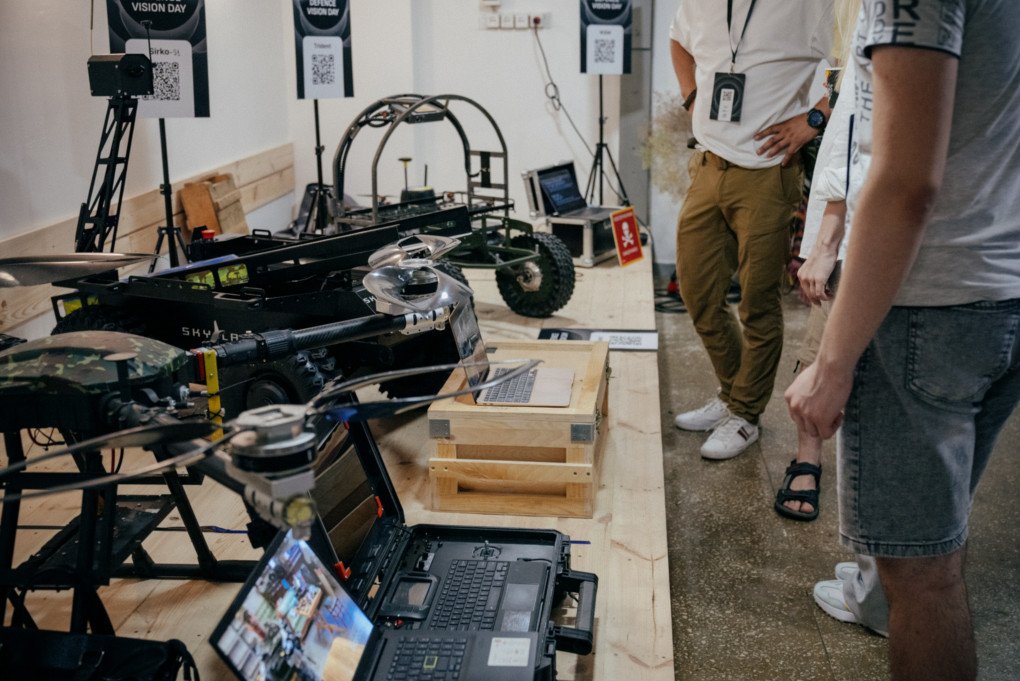- Category
- War in Ukraine
How Virtual Reality Technologies in Ukraine are Enhancing Modern Warfare And Helping To Train Soldiers

The war in Ukraine shows that defense technologies are no longer exclusively the domain of large defense companies and government contracts. Increasingly, teams of enthusiasts are emerging with technological solutions that significantly enhance the combat capabilities of units. In Kyiv, Defence Vision Day was held to showcase how military projects based on virtual and augmented reality (VR/AR) technologies can simplify the training process for units.
Heavy machine guns, particularly the Browning, are widely used in Ukraine today to shoot down Russian drones, specifically the Shahed drones. The cost of Shaheds is significantly lower than the missiles used in air defense systems, which are currently in short supply. Therefore, this weaponry is essential for protecting cities and critical infrastructure that regularly become targets for Russian forces. "Our team is from Sumy. When the Shaheds fly, we are the first to meet them. The safety of our city largely depends on these mobile fire teams," says Yuri, director of the e-learning technology center at Sumy State University and a participant in the event from a region bordering Russia.
This is the "Shahed Killer." That’s the name developers gave to their simulator. The weight and dimensions of the model completely match the real Browning machine gun. Thanks to Yuri's team’s development, the training of mobile groups has been significantly simplified.
This development helps users feel the weight of the weapon, understand the ballistics of the bullets, account for wind speed, and the specific flight characteristics of Shaheds. "There are many mobile fire groups around the city in different units; they all need to train. That’s why there was a need, not just an idea, but a necessity for a training complex that would allow constant, regular training," explains Yuri.
The complex allows not only for perfect training but also enables commanders to objectively assess who is best suited for this work. During practical exercises, you are given a personal card linked to your target practice profile, showing your accuracy and overall success with the Browning.
"Some have a 10-20 percent success rate, while others exceed 70 percent. Those with high scores are mostly professional soldiers," says Yuri.
VR-based simulators have been used in the Ukrainian army for several years and have significantly simplified the training process for soldiers. Logics7 has been producing professional solutions for fire training simulators since 2019.
According to the company, their developments make the training process for personnel up to 30 times cheaper without compromising quality. Overall, 50,000 servicemen from various units have been trained using the company’s systems.
The simulators presented by the company almost entirely mimic real combat conditions – wind, flight trajectory and altitude, and even warn about firing in the direction of residential areas, which is prohibited under certain circumstances.
Moreover, you can train on the complex not only individually but also as a whole unit and use different weapons simultaneously. For instance, you and other members of your unit can simultaneously try to hit a target using various weapons such as NLAW, Stinger, etc. Today, this technology nearly fully replicates the shot without losing real ammunition. "A good instructor can significantly harmonize their unit using our development," emphasizes Eduard, Logics7’s project manager.
The VR-based simulator provides a full immersion effect in virtual reality through a helmet. The operator sees the combat situation in 360°, where a three-dimensional model of the weapon is displayed in the virtual world, fully replicating the weapon's movements by the operator.

Thanks to the two-way connection between the launcher and the computer, the instructor can monitor the operator's actions, see the results of the exercises. The image seen by the operator in the three-dimensional world is displayed on the demonstration screen.
The software allows the instructor to launch different aerial targets, set the direction, height, and speed. All necessary actions for a shot are embedded in the software, mirroring real weapons, including missile characteristics and guidance systems. The software also logs any mistakes the operator might make and generates a report after each exercise.
Today's technology also offers great potential for training drone operators. Existing pilot training systems almost completely replicate realistic pilot training.
Oleksandr from MPS explains that after the full-scale Russian invasion began, the company focused on producing full mission simulators for drones. "Using the example of the 'Leleka-100' trainer, we are currently showcasing our product, our platform, which allows adding any number of different types of drones," says Oleksandr.

"We model the terrain as closely as possible, including cities or locations needed. With our simulator, you train all pre-flight checks, the flight order, we adjust artillery work if it’s a reconnaissance drone, and simulate various emergency situations. The most valuable aspect: we simulate electronic warfare (EW) work," Oleksandr explains.
Overall, the event featured 24 project presentations. Among them were air defense shooting simulators, medical aid training, and drone control systems. Three projects received grants and will continue working with the defense forces.
"These projects show that people can be trained in various ways. VR simulators can do this more effectively and cheaply. We need to increase the number of such events to ensure good ideas are not hidden but implemented and bring benefits," emphasized Deputy Defense Minister Kateryna Chernogorenko.
Teams from the Defense Builder accelerator also presented their solutions. Thirteen teams showcased their developments to the military, investors, and event guests.

Among the solutions presented were heavy and river drones, mine detection and clearance systems, turrets, robotic platforms, topography and map change tracking platforms, and a system for calculating shooting parameters to hit targets from covered firing positions.
"The number of participants at Defence Vision Day and the readiness level of the products demonstrate the growth of defense technologies and the potential of VR/AR for military training in Ukraine. The first cohort of Defence Builder teams shows significant progress, and we are pleased to implement these projects together with the Ministry of Defense and partners Sigma Software Labs, Genesis, and KSE," emphasized Kateryna Bezsudna, co-founder and operations director of Defence Builder.
-206008aed5f329e86c52788e3e423f23.jpg)
-75927b6cdbd6a2bae75db91d57457680.jpg)
-46f6afa2f66d31ff3df8ea1a8f5524ec.jpg)
-fe851b90d8a0ba797c376cd41cd6a9ac.png)
-605be766de04ba3d21b67fb76a76786a.jpg)

-24deccd511006ba79cfc4d798c6c2ef5.jpeg)
-531fe8d92c87f1630d3f1a2503c33089.png)
